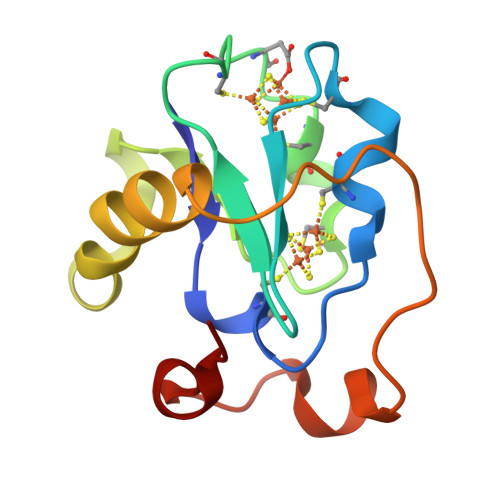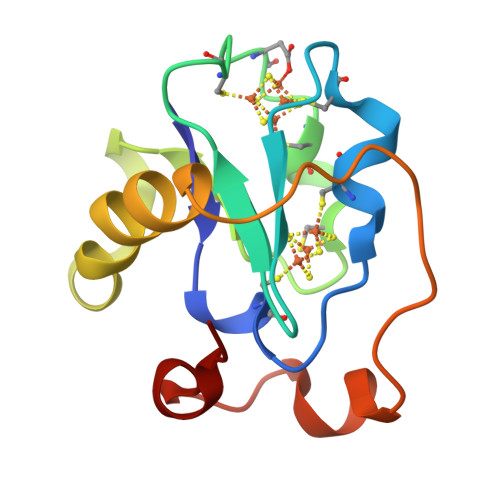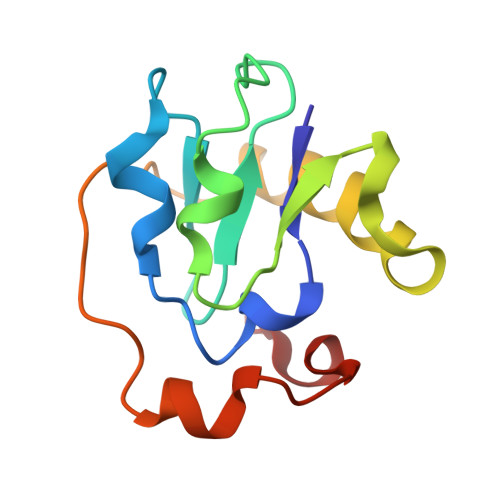Structure of C42D Azotobacter vinelandii FdI. A Cys-X-X-Asp-X-X-Cys motif ligates an air-stable [4Fe-4S]2+/+ cluster
Jung, Y.S., Bonagura, C.A., Tilley, G.J., Gao-Sheridan, H.S., Armstrong, F.A., Stout, C.D., Burgess, B.K.(2000) J Biological Chem 275: 36974-36983
- PubMed: 10961993
- DOI: https://doi.org/10.1074/jbc.M004947200
- Primary Citation of Related Structures:
1FF2 - PubMed Abstract:
All naturally occurring ferredoxins that have Cys-X-X-Asp-X-X-Cys motifs contain [4Fe-4S](2+/+) clusters that can be easily and reversibly converted to [3Fe-4S](+/0) clusters. In contrast, ferredoxins with unmodified Cys-X-X-Cys-X-X-Cys motifs assemble [4Fe-4S](2+/+) clusters that cannot be easily interconverted with [3Fe-4S](+/0) clusters. In this study we changed the central cysteine of the Cys(39)-X-X-Cys(42)-X-X-Cys(45) of Azotobacter vinelandii FdI, which coordinates its [4Fe-4S](2+/+) cluster, into an aspartate. UV-visible, EPR, and CD spectroscopies, metal analysis, and x-ray crystallography show that, like native FdI, aerobically purified C42D FdI is a seven-iron protein retaining its [4Fe-4S](2+/+) cluster with monodentate aspartate ligation to one iron. Unlike known clusters of this type the reduced [4Fe-4S](+) cluster of C42D FdI exhibits only an S = 1/2 EPR with no higher spin signals detected. The cluster shows only a minor change in reduction potential relative to the native protein. All attempts to convert the cluster to a 3Fe cluster using conventional methods of oxygen or ferricyanide oxidation or thiol exchange were not successful. The cluster conversion was ultimately accomplished using a new electrochemical method. Hydrophobic and electrostatic interaction and the lack of Gly residues adjacent to the Asp ligand explain the remarkable stability of this cluster.
Organizational Affiliation:
Department of Molecular Biology and Biochemistry, University of California, Irvine, California 92697, USA.




















